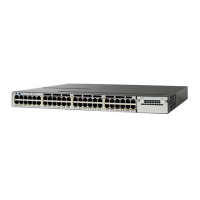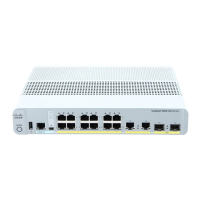Enables the timer to recover from the Port Aggregation Protocol
(PAgP)-flap error-disabled state.
pagp-flap
Enables the timer to recover from the port mode change failure
error-disabled state.
port-mode-failure
Enables the timer to recover from the PPPoE IA rate limit
error-disabled state.
pppoe-ia-rate-limit
Enables the timer to recover from a port security violation disable
state.
psecure-violation
Enables the timer to recover from an IEEE 802.1x-violation disabled
state.
security-violation
Enables error detection on an SFP configuration mismatch.sfp-config-mismatch
Enables the timer to recover from a storm control error.storm-control
Enables the timer to recover from the UniDirectional Link Detection
(UDLD) error-disabled state.
udld
Enables the timer to recover from the VLAN Membership Policy
Server (VMPS) error-disabled state.
vmps
Command Default
Recovery is disabled for all causes.
Command Modes
Global configuration
Command History
ModificationRelease
This command was introduced.Cisco IOS XE 3.3SE
Usage Guidelines
A cause (such as all or BDPU guard) is defined as the reason that the error-disabled state occurred. When a
cause is detected on an interface, the interface is placed in the error-disabled state, an operational state similar
to link-down state.
When a port is error-disabled, it is effectively shut down, and no traffic is sent or received on the port. For
the BPDU guard and port-security features, you can configure the switch to shut down only the offending
VLAN on the port when a violation occurs, instead of shutting down the entire port.
If you do not enable the recovery for the cause, the interface stays in the error-disabled state until you enter
the shutdown and the no shutdown interface configuration commands. If you enable the recovery for a cause,
the interface is brought out of the error-disabled state and allowed to retry the operation again when all the
causes have timed out.
Command Reference, Cisco IOS XE Everest 16.5.1a (Catalyst 3650 Switches)
39
errdisable recovery cause
